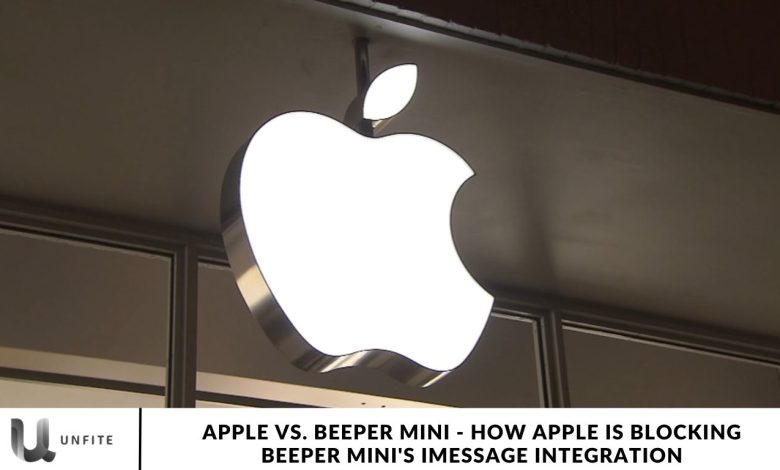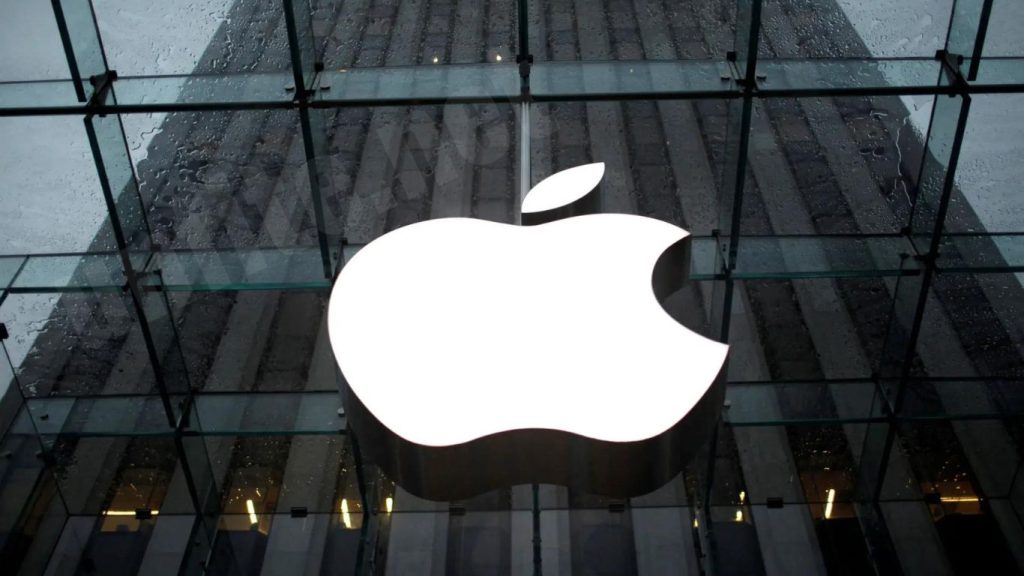Apple vs. Beeper Mini – How Apple is Blocking Beeper Mini’s iMessage Integration

Eric Migicovsky, former co-founder of Pebble, recently launched the Beeper Mini app, designed to eliminate Apple’s notorious green bubbles for Android users when messaging. However, shortly after its release, the app experienced an immediate outage, reportedly due to security concerns. Despite this, Beeper assures users that the service remains secure and is actively working to restore the app’s functionality, aiming to resolve the issue and get it back online.
We’ll explore why Apple blocked Beeper Mini’s iMessage service and the reasons behind Apple’s decision to prevent Beeper Mini from enabling messaging on its platform, shedding light on the key factors that led to this restriction.
Apple Confirms Blocking Beeper’s Mini iMessage Service.
Accessing Apple’s iMessage service typically requires a small monthly fee, but recently, Beeper Mini became available on Android, offering an alternative solution. A UK-based company, Nothing, had previously attempted a similar approach.
Unfortunately, users trying to send messages through the Beeper Mini app encountered errors like “timed out lookup requests” and “lookup failed on the server.” After numerous issue reports, Beeper acknowledged the problem and confirmed they are actively working to restore the service.
Why Did Apple Block Beeper Mini’s iMessage Service?
Shortly after Beeper Mini’s launch, Apple informed The Verge that it had blocked the app for using fake credentials to access iMessage. Apple stated that it took this action to safeguard users, claiming Beeper’s approach “exposed user security and privacy to significant risks.”
In response, Beeper Mini emphasized that its service offers end-to-end encryption, unlike unencrypted SMS. The company posted on X (formerly Twitter) that its platform “enhances safety” by protecting all conversations. Additionally, Beeper Mini revealed they are willing to share their complete source code with third parties for thorough security audits, contingent on mutual agreement.
How Did Beeper Respond To Apple’s Move?
In the report, Eric Migicovsky questioned, “Why would Apple block a service that enables their users to send secure messages to Android users instead of using insecure SMS?” He raised this point, especially if Apple is genuinely “concerned about the privacy and security” of iPhone users.
Despite the disruption, Beeper remained hopeful, stating that they expect to share “good news” with users soon as they work to restore the service. Beeper Mini, launched for Android users to access iMessage on iOS devices, was introduced with a subscription cost of $1.99 (around Rs 160) per month.
Apple vs. Beeper Mini – A Battle Over iMessage Access

Background of Beeper Mini’s Attempt to Integrate iMessage on Android Devices
Beeper Mini emerged as an innovative solution aimed at bridging the communication gap between iOS and Android devices by allowing Android users to access Apple’s popular iMessage service. Launched by Eric Migicovsky, a well-known figure in the tech industry and the former co-founder of Pebble, Beeper Mini was designed to provide users with a seamless messaging experience across platforms. The app aimed to tackle a long-standing frustration for Android users: being excluded from iMessage, which is widely regarded for its user-friendly interface, robust security features, and rich media capabilities.
Introduction to Beeper Mini and Eric Migicovsky
Beeper Mini is a messaging app that allows users to send and receive iMessages on Android devices. By using innovative technology, Beeper Mini seeks to offer a secure and user-friendly alternative for those who prefer the flexibility of Android but want to stay connected with friends and family who use iPhones.
Eric Migicovsky, the visionary behind Beeper Mini, gained fame as the co-founder of Pebble, one of the first successful smartwatches. His experience in the tech industry has fueled his passion for creating solutions that enhance user experience across different platforms. With Beeper Mini, Migicovsky aims to challenge the barriers posed by proprietary messaging services and to empower users with more choices in how they communicate.
The Uniqueness of iMessage and the Demand from Android Users
Apple’s iMessage stands out in the messaging landscape for several reasons. First, it offers end-to-end encryption, ensuring that conversations remain private and secure from unauthorized access. Additionally, iMessage provides a range of features that enhance the user experience, such as read receipts, typing indicators, and seamless integration with other Apple services.
These features have made iMessage incredibly popular among iPhone users. Still, they also highlight a significant drawback for Android users: the inability to access this secure and feature-rich messaging platform. Android users have long sought access to iMessage to enjoy these benefits and communicate more effectively with friends and family who are entrenched in the Apple ecosystem. The desire for cross-platform compatibility has only intensified as more people rely on messaging apps for everyday communication, making Beeper Mini’s mission to integrate iMessage on Android devices all the more relevant.
What is Beeper Mini and How Does It Work?
What Beeper Mini Is and the Service It Offers
Beeper Mini is a cross-platform messaging app designed to bridge the communication gap between iOS and Android users by allowing Android devices to access iMessage, which has traditionally been exclusive to Apple’s ecosystem. Developed by Eric Migicovsky, Beeper Mini enables Android users to send and receive iMessages, bypassing the notorious “green bubble” that typically appears in conversations between iPhone and Android devices. The app aims to enhance the messaging experience for Android users by providing access to iMessage’s encrypted chats, media sharing, and other features that are usually available only to Apple users.
Technology Behind Beeper Mini’s iMessage Integration with Android Devices
The technology behind Beeper Mini’s integration of iMessage on Android devices is a crucial innovation. Beeper Mini uses a cloud-based server to facilitate the connection between Android and Apple’s iMessage servers. This setup involves the use of Apple hardware, such as a Mac or iPhone, acting as a bridge between the two platforms. Once the Beeper Mini app is installed, it reroutes messages through this Apple device to ensure that Android users can seamlessly send and receive iMessages. This method enables Android users to enjoy iMessage’s native functionalities like typing indicators, media sharing, and message syncing across devices.
To protect user data, Beeper Mini employs end-to-end encryption, ensuring that messages are secure and cannot be intercepted by third parties. This encryption mirrors the high-security standards of iMessage, making Beeper Mini not just a convenient but also a safe option for users who want to enjoy iMessage on their Android devices.
Subscription Model and Its Appeal to Users
Beeper Mini operates on a subscription model, offering its services at a cost of $1.99 per month (approximately Rs 160). This pricing model is highly appealing to users because it provides an affordable way to access iMessage’s premium features on Android devices. For many Android users, the small monthly fee is justified by the ability to participate in iMessage chats without having to purchase an iPhone or other Apple hardware.
The subscription fee covers the ongoing maintenance of the cloud-based service and ensures that the app remains functional and secure. Given the significant limitations that Android users face when communicating with iPhone users—especially the lack of advanced features and security in SMS—the modest price of $1.99 makes Beeper Mini an attractive alternative for enhancing the messaging experience across platforms.
What’s Next for Beeper Mini and iMessage Integration?

Beeper Mini’s Plans for the Future
Beeper Mini is actively working to restore its services following the challenges posed by Apple’s blocking of its iMessage integration. The company has expressed optimism about overcoming the technical hurdles and is committed to ensuring that users can continue to access iMessage securely from their Android devices. Beeper’s development team is focused on refining its technology to enhance the user experience while maintaining high security and privacy standards. They aim to communicate more effectively with users about updates and potential improvements to the service, which includes exploring alternative methods to access iMessage without compromising security.
Possible Outcomes of the Battle: Legal Challenges and Policy Changes
The ongoing conflict between Beeper Mini and Apple could lead to several potential outcomes, including legal challenges or shifts in policy regarding third-party access to iMessage. If Beeper decides to pursue legal action against Apple for blocking its service, it could spark a larger conversation about antitrust regulations and the rights of consumers to access services across platforms. This battle also encourages regulators to examine Apple’s practices more closely, particularly concerning how it restricts competition and user choice in the messaging space.
On the other hand, Apple might consider policy changes to allow limited access to iMessage for third-party apps, which could open the door for more inclusive communication solutions. Such a shift would benefit users who are seeking seamless messaging experiences across different devices and platforms while maintaining Apple’s focus on security.
Other Potential Solutions for Android Users Seeking Access to iMessage
While Beeper Mini presents a promising solution for Android users, there are other potential alternatives to consider:
- Third-Party Messaging Apps: Some apps, like WhatsApp and Signal, offer cross-platform messaging with end-to-end encryption. While they don’t provide direct access to iMessage, they can serve as effective alternatives for secure communication.
- Using Apple Devices: Those who have access to an Apple device, such as an iPad or Mac, can utilize these devices to send and receive messages, even if they primarily use an Android phone.
- iMessage Alternatives: Other services like Google Messages and Telegram are designed to work across various platforms and offer features similar to iMessage, such as multimedia sharing, encrypted chats, and more.
- Email and Social Media Messaging: Users can also rely on email or social media platforms like Facebook Messenger or Instagram Direct for cross-platform communication, though these may need to include some of the convenience and features of iMessage.
- Web-based Solutions: Some developers are exploring web-based applications that may provide Android users with limited access to iMessage functionalities. While still in the early stages, these solutions could offer new ways for users to connect across platforms.
Frequently Asked Question
What is Beeper Mini? Who is the founder of Beeper Mini?
Beeper Mini was founded by Eric Migicovsky, who is also known for co-founding Pebble, one of the first successful smartwatch companies.
Why is iMessage popular among Apple users?
iMessage is favored for its end-to-end encryption, rich media capabilities, and features like read receipts and typing indicators, making it a secure and user-friendly messaging option.
What challenges is Beeper Mini facing with Apple?
Beeper Mini is currently facing restrictions from Apple, which has blocked the app’s access to iMessage by preventing the use of fake credentials to connect to its messaging service.
What are the implications of Apple’s actions against Beeper Mini?
Apple’s actions may raise questions about antitrust regulations, consumer rights, and competition in the messaging space, potentially prompting legal challenges or policy changes.
How does Beeper Mini ensure user security?
Beeper Mini claims to offer end-to-end encryption for its messaging service, similar to iMessage, to protect user conversations from unauthorized access.
What is the cost of using Beeper Mini?
Beeper Mini operates on a subscription model, charging users $1.99 per month (approximately Rs 160) for access to its services, including iMessage integration.
What steps is Beeper taking to restore its service?
Beeper is actively working on technical solutions to overcome Apple’s challenges and has communicated optimism about restoring services for its users.
Could this situation lead to changes in how Apple manages iMessage?
It’s possible that ongoing scrutiny and public discussion around this issue could lead Apple to reconsider its policies regarding third-party access to iMessage and promote more inclusive messaging options across platforms.
Conclusion
The ongoing clash between Apple and Beeper Mini underscores the complexities of competition and consumer choice in the digital messaging landscape. As Beeper Mini endeavors to provide Android users with access to iMessage—a service that has long been coveted for its security and features—Apple’s stringent measures to block this integration raise essential questions about user rights and corporate control over communication tools. While Apple cites user security as a primary reason for its actions, critics argue that such measures inhibit innovation and limit options for consumers.
As Beeper Mini navigates these challenges, the outcome could have significant implications for the future of messaging apps and their interoperability. Whether this leads to legal battles, policy revisions, or new alternatives for users, it is clear that the demand for seamless communication across platforms is stronger than ever. The resolution of this conflict will not only shape the future of Beeper Mini but also influence how tech companies approach integration and competition in the evolving digital landscape. Ultimately, the desire for a more interconnected and user-friendly messaging experience may drive change, fostering a more inclusive ecosystem for all users, regardless of their device preference.




